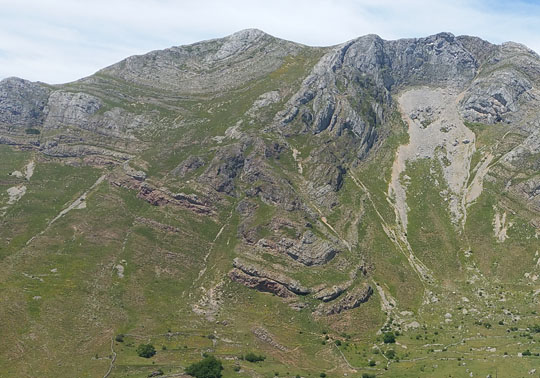Study proves that temperature increase is worse in interior mountains than in coastal ones
- Press Office
- November 20th, 2018

Temperature increase is more extreme in Valencian interior mountains with greater environmental value than in coastal ones, as stated by some studies on climate change in the Valencian Country by some experts in the Universitat de València.
Researches consider the actual impact of climate change (temperatures and rainfalls) in the Valencian Country since the middle of the 20th century until nowadays. The main contribution has been the way in which these changes are being mapped. With accurate spatial detail, they have been mapped thanks to new methods that gather and use information from other series of climate (regardless of its length) supported by statistical downscaling methods. During last days (2-11-2018), a study on rainfalls revealed a significant loss of profitable rainfalls at both inner basins and heads of the rivers Xúquer and Segura.
This studies incorporate results from other studies on thermal and bioclimatic change by the same research group from the Departments of Geography and Physics of the Universitat de València (professors Javier Miró, María José Estrela, Vicente Caselles, and Ígor Gómez in collaboration with professor Jorge Olcina from the Laboratory of Climatology in the University of Alacant). The results were published in international journals on the matter such as Atmospheric Research.
A remarkable discovery is the increase of temperature inversion during the night, which is related to high temperatures and positive anomaly at peaks and slopes. Nevertheless, this situation changes in valleys and plains near the coast, out of the urban effect (and this way more protected from the thermal climate change effect). Since most of long-term observatories are located in valleys, the faster climate change of today affecting mountains had not been detected so far. However, it has now been quantified resulting in a global warming that is two times more quickly at interior areas than at coastal ones (three times in the case of the mountains of Gúdar and Javalambre). In this sense, since 1948, an increase lower than 0,5ºC has been observed in coastal areas and closer to 1ºC in interior areas, reaching a 1,5ºC in higher interior areas. June – a spring-like month in terms of climate in theory –, is the most critical month, which has become now a summer-like month. This month has registered a thermal increase of up to 2,5ºC in higher interior areas, whose highest temperatures are 3ºC in Gúdar and the Penyagolosa, as the most critical case.
The thermal increase is also bigger in most maximum temperatures despite the increase in the minimum in coastal areas.
That translates into a potential bioclimatic change and vulnerability of the interior mountains areas of the most environmental value. In this sense, the team has assessed the potential change that would have already occurred in bioclimatic soils which depend on temperature. There was a special emphasis in the natural parks of the region. The results indicate a major regression in the area which includes the northern bioclimatic soils, such as the supra-Mediterranean and oro-Mediterranean (Itc Rivas-Martínez). This indicates a potential risk for the plant species that rely on the climate characteristics of these soils.
This context of the increase in temperatures and decrease of precipitation, which is turning out to be bigger in the main headwaters for the water supply in the territory, can be explained because of changes occurred in the general atmospheric circulation on our latitudes. As such, the approach of low pressures from West to East of the Iberian Peninsula is being gradually hindered by warm airs accompanied with high pressures and barometric swamps. This affects the arrival of rains to interior mountains of the north and a lower frequency of the winds of the West, despite the intersperse of very humid time spans in which this circulation is re-established. In addition, all of this translates in a major frequency of sea wind or breezes in the coastal, which reduces part of the climate change effects. At the same time, the sporadic storms of East Mediterranean nature achieve greater torrentiality in the shore, which causes rains in that part and less in the interior.
All of this opens the doors of a situation of sharp evapotranspiration and water stress in the high areas of the interior which provide for aquifers and wider rivers. We do not have any relevant dams or infrastructure capable of taking advantage of heavy rains which are increasingly affecting the coast or the mountains near the coast of the south of the Gulf of Valencia.
















